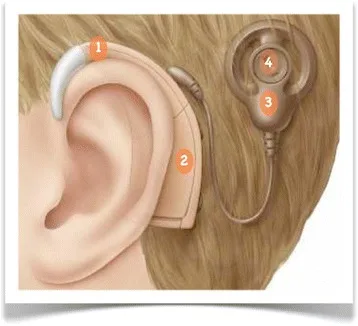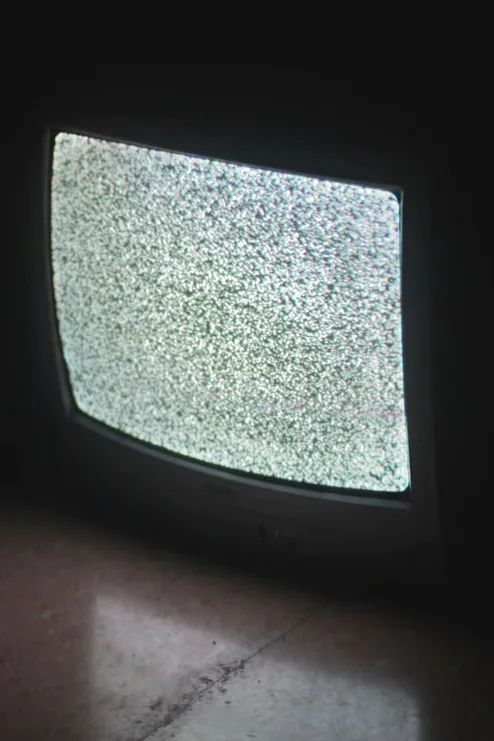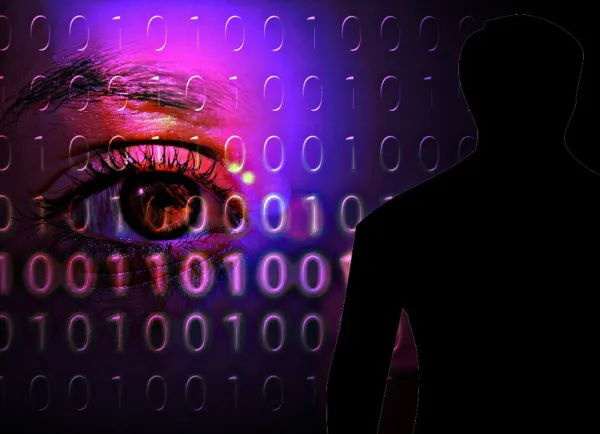Johnny Mnemonic - Data Couriers and the Past Future of Tech

Welcome to our first post of our series Celluloid Circuits, we’re diving into the movie that sparked the idea for my podcast and this section on my blog: Johnny Mnemonic, the 1995 cyberpunk classic based on a story by father of the cyberpunk genre William Gibson.
So Get your Sino logic 16 and GPL stealth Modules ready and Let’s Jack In.
If you haven’t seen it, Johnny Mnemonic is a sci-fi action film set in a dystopian future. Johnny—Silverhand, I mean Mnemonic (played by Keanu Reeves)—is a data courier. His cybernetic brain implant lets him carry sensitive information directly in his head. He’s hired to transport a file containing data so critical that it could cure a global pandemic called Nerve Attenuation Syndrome (NAS). However, there’s a catch: the file’s size exceeds his storage capacity, putting him at risk of dying unless he can offload the data in time.
From there, chaos ensues. Johnny finds himself hunted by a ruthless mega corporation, the Yakuza, and a fanatical preacher with cybernetic enhancements, played by Dolph Lundgren. (Yes, his character is as over-the-top as you’re imagining.) and just remember his catch phrase is Jesus Time. Johnny’s only allies are Jane, a bodyguard played by Dina Meyer, a resistance leader named J-Bone (played by Ice-T, because why not?), and Jones, a cybernetically enhanced dolphin who helps Johnny hack into his brain. It’s as gloriously absurd as it sounds.
The movie is pure dark cyberpunk: a grimy, high-tech world where corporate greed reigns supreme, wealth disparities are stark, and humanity wrestles with the ethical dilemmas of technological advancement. And, being a ‘90s movie, it kicks off with a scrolling text crawl for exposition—because of course it does.
Set in an alternate 2021, the world of Johnny Mnemonic feels uncomfortably close to home, especially in how it depicts global pandemics, corporate dominance, and our uneasy relationship with technology. Since NAS is central to the film’s story, that’s where we’ll start.
"Nerve Attenuation Syndrome" sounds a little more medical than sci-fi. Now, Im no doctor, but attenuation is a word I recognize, at least in the tech field it’s defined as “the loss of signal strength usually in reference to distance of a cable. Latin roots break it down to mean “to lessen or thin out,” so NAS could be viewed as the thinning or weakening of nerves.
NAS seems to target these nerve pathways, creating symptoms similar to real-world neuromuscular disorders. What happens if we weaken the nerves? According to Cedars-Sinai, symptoms can include muscle weakness, twitching, cramps, balance issues, and even breathing difficulties. We see similar effects in the film with characters like Jane showing tremors and seizures, or as referenced in the film the "black shakes." This makes NAS feel eerily grounded in reality, resembling conditions like ALS or MS.
Sound familiar? You might remember ALS, the disease spotlighted by the 2014 Ice Bucket Challenge. Let’s give the film some points for plausible symptoms and terminology!
Now, what about how NAS spreads? Henry Rollins' character explains, “It’s all the technology in the world poisoning the airwaves.” Sound familiar?
It’s similar to that old cell phone paranoia “you're going to get brain cancer holding a phone up to your ear” and, more recently, concerns over 5G. Interestingly, the World Health Organization (WHO) acknowledges something called Electromagnetic Hypersensitivity, or EHS. EHS causes symptoms like headaches, fatigue, and anxiety, though the cause is still unknown. WHO states that while these symptoms are real, there’s no evidence linking them to EMF exposure. Studies have suggested that environmental factors like fluorescent light “flicker” or even stress may be the culprits. NAS transmission based in fear…yes
truth….. Probably not.
We can't forget the end of the film with the “cybernetic dolphin" Jones. I love this part of the film, even if it feels pretty insane. Jones helps Johnny hack his brain and discover the rest of the still images needed for the download code, and we are treated to a 3d representation of hacking one's brain. At first glance, it seems absurd, but cybernetically enhanced animals aren’t as fictional as we might think. In fact, some researchers today are working on animal-machine interfaces, particularly with animals like rats and dogs. They’re using this research to understand neural pathways and even experiment with robotic enhancements. Hoping to better understand the effects on humans. So while we might not see hacking dolphins anytime soon, there’s a slight realism to the concept of wetwired devices.

But here’s the thing—we’re still quite far from developing implants capable of direct interaction with computers. Nothing even close to Johnny's ability to ‘jack in’ and directly load data into his brain. Today’s closest counterpart would be Brain-Computer Interfaces, or BCIs, which are primarily used in the experimental stages to control prosthesis. Some BCIs have shown potential in basic device control, but we’re not yet at a point where a person could upload a data package into their brain like Johnny can.”
Right now, these BCI technologies remain in testing. The Company Neuralink has recently gotten FDA approval for human trials, but we’re likely at least a decade away from any widespread commercial availability. So while Johnny's implant serves as an interface—and his brain as the storage—we’re just not there yet. Current implants are still focused on physical functions, not data transfer."
Alright, so what would it take for us to get to Johnny's level of implant? Let’s break down what his implant seems capable of in the movie. First, it transforms brain matter into storage space. Then, it allows data to flow smoothly between his brain and other external devices. It seems to perform complex encoding and, even cooler, it can receive firmware updates—kind of like your smartphone.” "One of the scenes that illustrates this beautifully is when Johnny receives a call from Ralfi about a crucial upgrade. In the elevator, Johnny connects a 'Pemex Memory Doubler' to boost his storage from 80 to 160 gigabytes.
Remember this is the 90’s the age of ZIP disks and CD-r Dvdr-r so maybe max portable storage would be 8gb. Johnny is carrying COD Coldwar a whopping 300 plus GB. Sorry back on track.

How does the memory doubler work? It’s possible it either gains access to additional brain matter, effectively overwriting memories like you would delete files, or it improves or changes the compression to squeeze in more data. Lets take a look at both and see why I think its one over the other.
But first we need to get a little gritty with the tech
"Alright, let's talk about data compression. This is key in Johnny Mnemonic when Johnny upgrades his implant with the 'Pemex Memory Doubler.' As using compression would work to increase storage without using up more physical space.
"Data compression is the process of reducing the size of a file or dataset so it takes up less space. Imagine you have a box of packing peanuts and you squeeze it down to half its size without changing the number of peanuts inside. That’s what compression does with digital information—it finds ways to store the same data, just with less 'space.' There are two main types of compression: lossless and lossy."
"With lossless compression, every single bit of data is preserved. This type is commonly used for files where accuracy is critical, like text documents, databases, or certain image formats. An example of lossless comparison is the use of ZIP files.
"On the other hand, lossy compression reduces file size by discarding less noticeable data. For example, MP3 audio files or JPEG images use lossy compression, cutting out frequencies in sound or colors in images that our ears and eyes might not notice much. This can dramatically reduce file sizes, but it does sacrifice a little quality. Imagine cropping a few unimportant pixels out of a photo—you still recognize the image, but it’s slightly 'lighter' in terms of data."
"So in Johnny Mnemonic, if his implant could perform something like compression, it might work similarly to lossless techniques, as I assume a mnemonic courier is carrying critical data that should not be altered. Compressing data before storage would let Johnny carry more information while taking up less of his brain's neural 'space,'. But is this really what happens.
Upon my initial viewing of the film, I had assumed that Johnny's implant was simply a sophisticated storage device equipped with external interfaces and input mechanisms. However, a pivotal moment occurs when Johnny explains the nature of mnemonic couriers to Jane. During this explanation, he reveals that the process necessitates "dumping some long-term memories" - specifically, childhood recollections. This revelation, which is also prominently featured in the film's trailer, provides conclusive evidence that Johnny's brain matter itself serves as the actual storage medium for the data he transports. This makes the “memory doubler” even more unsettling—it’s not just adding space; it’s erasing Johnny’s humanity.
The movie does not explain exactly how the tech works, but I will try my best by breaking down the data upload scene.
We see Johnny break out the tools of his trade. He goes through the instructions about the still tv frames to the two scientists and puts on the VR goggles, jacks into his equipment, which looks like a broken down Sony Walkman MP3 player with a mini disk. We then get to see what johnny sees the data flashing in front of his eyes. So what I believe is going on is that by jacking in, he is interfacing with his implant telling it to record all viewed information in long term memory. So while the data is being displayed in front of his eyes the implant is recording how the neurons are firing which we will see is important later on. And the data is stored in his long term memory. Throughout this scene we see johnny is in obvious discomfort if not pain. Which is a recurring theme in the film, interfacing with data or the internet is harmful. It was Gibsons Idea that the internet would be a taxing environment, im glad to see this made it into the film.
"Let’s explore the storage capacity of the human brain. Scientists suggest the human brain might hold up to 2.5 petabytes of data. For context, that’s enough storage for about three million hours of TV. You’d have to watch non-stop for over 300 years to fill that up."

"But the brain doesn’t store data in simple, standalone units like a hard drive. Memories are stored as a certain pattern of firing Neurons, creating a highly efficient and resilient storage system. The brain’s ability to store and organize data through these complex networks is, frankly, on another level compared to our digital systems." But because the way that memories are made that is why a certain firing of neurons may retrieve a memory for example a smell triggering a thought of a specific memory that includes that smells memory firing pattern in it. While we never get to see a proper download scene. In my opinion this is how it would play out. Johnny would be shown the three still frames from the TV and by viewing those three frames it would bring up the memory from long term then the implant would decode those neurons firing based on the collected firing data previously and the download could occur. It seems at least from a plot perspective that the only way to remove the stored material is to download it.
And remove the information johnny wants to do as the overflow of information has caused “synaptic seepage”. The synapse are the areas where neurons communicate with each other, if there is seepage into areas that should not be altered, causing neurons to misfire or not fire, while I can only imagine the types of issues this could occur. Obviously death is the result as warned to johnny. A medical term for this would be neuropathy.
What is the information as discussed previously the viewer knows its the Cure for NAS but why all the fuss to retrieve it and no attempts to safe guard it.
A recurring theme in Johnny Mnemonic is corporate greed. Pharakom, the megacorporation at the center of the plot, possesses the cure for NAS but chooses not to release it. Why? Because treating the disease is more profitable than curing it. This echoes real-world criticisms of the pharmaceutical industry, where companies have been accused of prioritizing profit over public health.
The film’s depiction of corporate corruption feels uncomfortably relevant. It raises questions about how much power we allow corporations to wield—especially when their bottom line takes precedence over human lives. Pharakom’s actions are a stark reminder of the ethical dilemmas that arise when profit motives intersect with critical healthcare needs.
The last thing I want to take a look at is the advancements in AI, we see multiple times this AI disembodied head appear to both Johnny Mnemmonic as well as Mr. Takahasi, we latter learn this is Anna Karmann the founder and former CEO of pharmacom who was imprinted on the compnaies nueral net. We see the that this AI or VI haven't decided which is sympathetic to the plight of Johnny and the NAS underground so much so that she aids them, Eventually getting herself "burned out" from PharmaKoms mainframe. Which is murder at least in this film. According to the film the AI has Swiss citizenship under the artificial intelligence laws of 2006. Which tells me that AI has advanced to the point where we deem it sentient to have its own citizenship and all the perks that come along with that.
Beyond just the technology, Johnny Mnemonic also plays into our cultural fears about data and privacy. In today’s world, we rely on secure methods to protect sensitive information, whether it's medical records, financial data, or corporate secrets. In the 90s, this concept of literally carrying data in your head might have seemed wild. But now, with discussions around data encryption, cyber warfare, and surveillance, it feels oddly prescient. And maybe the only way to safely store data in our ever connected world. Its themes around tech-induced illness, data security, and bio-enhancement may have been far-out sci-fi in the 90s, but they resonate deeply today.
There are so many other tech things in this film and wish I could discuss them all. Maybe we will revisit the film.
Be sure to subscribe to Celluloid Circuits to listen to the episode when it releases.
As always remember the future is only a Reel away.



